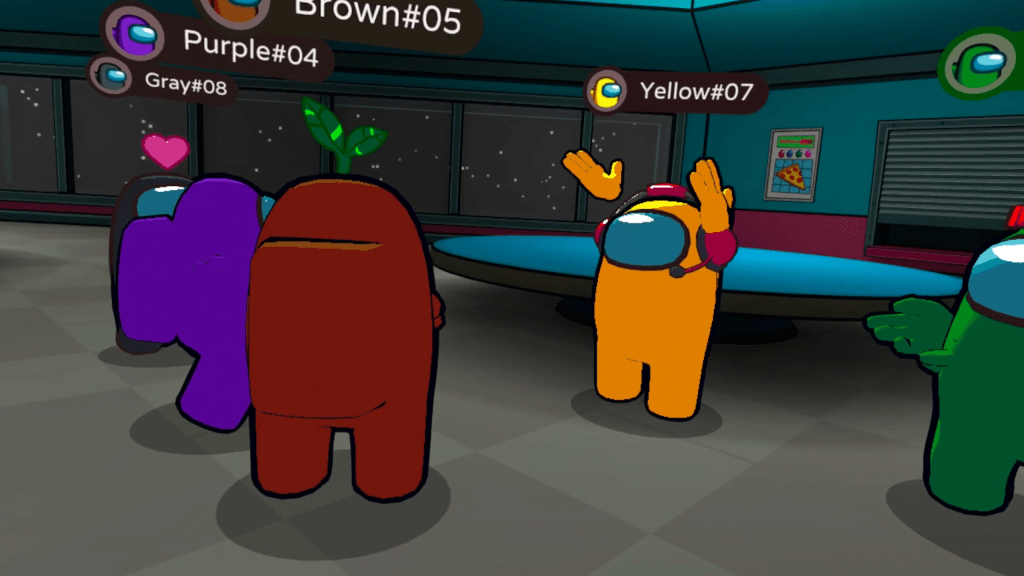Over a decade ago, virtual reality was poised to be the next big thing in interactive mediums. Developers challenged VR users to explore worlds in ways they had never done before, at a level of fidelity that had not been possible before. Now, with mainstream VR options like the Meta Quest and the PlayStation VR 2 available to consumers, these worlds to explore are increasingly being shared with other players. While single-player titles like Asgard’s Wrath II are still commanding critical attention, VR is increasingly trending toward multiplayer sessions like Rec Room, Phasmophobia, Among Us, and Breachers. For what feels like an inherently isolated technology for game playing, VR seems to be finding its market strength in playing alongside others.
Alberto Moreno, former Global Head of Marketing and Producer of Brazen Blaze at the Tokyo-based MyDearest, thinks this movement is a natural result of VR adoption expanding. “It’s more than just a trend. I would say that because of the increase of VR users these last years. VR Multiplayer is more feasible now, making it easier, though still hard, for a multiplayer game to have a decent player-base that allows to run successfully a game.”
This is not a change that differs from the overall gaming landscape, as multiplayer games-as-a-service have long been a driving force of success on consoles, mobile, and PC. Games like Fortnite, Apex Legends, Grand Theft Auto Online, and others are all about multiplayer experiences on various flatscreen platforms. Now that VR has hit a userbase number where the combined units can actively support reasonably large player bases, the medium has taken a similar path to flatscreen gaming at a faster clip.
For developers looking to develop a VR game, this changes the calculus on their next five to ten years. A successful single-player title is released into the world, gets a few updates here and there, and then after some time they return to work on the next project. A successful multiplayer game means focusing on iteration and community for an existing game for years. With as rapid a pace as VR technology can improve, this makes developing a multiplayer game a bit more of a mad dash with a moving target. There have been three consumer-level Meta Quest releases in five years with improved hardware each time, meaning that scaling development for the available headset could be a bit of a pain with a popular game wielding an expectant community over time.
For VR specifically, there are concerns for multiplayer development beyond scalability. Making sure the hardware can keep up is far more important with a VR title than it is in a flatscreen game where the player does not have the screen so close to their eyes.
” [Development is] way harder. VR doesn’t play around with the frame rate, you can’t do like in PC and go ‘well, it’s not perfect but it’s not bad,’ you have to keep stable 72 FPS as much as you can if you don’t want your players to get sick,” says Moreno. “The issue with multiplayer games is that that, there are so many possible variables that keeping a stable frame rate is really challenging. In a single-player game, you can control where the player is and what their enemies are, but in multiplayer you can have all the players throwing at the same time grenades creating thousands of particles and destroying the experience.”
Moreover, a fundamental issue that VR developers need to keep in mind is that hours spent playing multiplayer do not necessarily translate well into VR.
“The other challenge is play-time and friction in VR,” according to Moreno. “In flatscreen games you can just sit in your couch, take your controller, and you’ll be playing a game in less than a minute. VR takes some time to prepare and it’s way more active, players won’t be playing 5 hours of a game without realizing it like in flatscreen, after one hour you start to notice. That means the average playing time is shorter, the waiting for matching feels longer, and all of that affects the matching in a multiplayer game.”
In terms of development benefits, though, pursuing multiplayer trends at this point will position the next-generation of multiplayer games for the next wave of VR players ready to pick up a new multiplayer game to immerse themselves in with their friends. It removes some of the guesswork from what the VR audience will want.
Moreno remarks that he expects this is not just a multiplayer focus, but on social aspects as a whole, and it’s likely that trend will continue.
“Social is king,” Moreno adds. “Of course you have your multiplayer shooting games like Ghosts of Tabor making gazillions of dollars but the trend right now is focusing on the social element of multiplayer rather than the other more ‘hardcore’ elements. Gorilla Tag’s success brought that formula [forward] and now many games, like Yeeps: Hide and Seek, are realizing that is the multiplayer trend for the new market. VR players aren’t the same as 4 or 5 years ago, younger generations are playing VR and they prioritize playing with their friends while doing silly things rather than having a hardcore multiplayer experience.”
Disclaimer: The author of this article worked at MyDearest on the game Brazen Blaze from 2022 through 2023.
Source link

